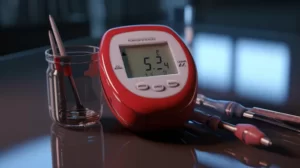The rapidly increasing number of Americans seeking alternative medicine has prompted medical schools nationwide to start incorporating courses that cover various alternative therapies. From acupuncture and massage therapy to holistic practices and herbal medicine principles, future doctors are being educated in a vast array of non-traditional healthcare practices.
South Bay School of Nursing’s Acupressure Classes
One of the pioneers in this movement is the South Bay School of Nursing in California, now offering classes in acupressure and other alternative therapies. The aim is to increase students’ chances of finding positions in a larger number of institutions that now embrace these practices. Acupressure, an ancient healing art, involves applying pressure to specific points on the body to provide relief from stress, pain, and other ailments.
The Benefits of Acupuncture
Acupuncture, another popular alternative therapy, involves inserting fine needles into specific points on a patient’s body to help improve their overall health and wellbeing. Studies have shown that acupuncture is an effective treatment for chronic pain, migraines, allergies, anxiety, and much more. As a result, a significant number of medical schools now include acupuncture courses in their curricula to prepare students for an increasingly popular and in-demand therapy.
Texas College of Traditional Chinese Medicine’s Dual Degree
For students with a deep passion for alternative medicine, the Texas College of Traditional Chinese Medicine offers a unique opportunity – a dual master’s degree program. This degree is recognized by both the U.S. and China, allowing students to learn therapies that can be used at home and abroad. Graduates from this program have more opportunities to broaden their careers, taking their skills and knowledge across international borders.
Herbal Medicine Principles and their Importance
Another topic gaining popularity in medical schools is herbal medicine principles. This practice involves using plant-based remedies to treat various ailments and promote health, drawing on the ancient knowledge of natural healing. As people become more interested in natural medicines and holistic approaches, medical students must have a deep understanding of the benefits and potential risks of herbal remedies to better advise patients and incorporate them into treatment plans.
Yoga and Wellness in Medical School Curricula
Yoga and wellness have also become important components of medical school curricula. These practices help patients reduce stress and maintain a healthier lifestyle, significantly improving their overall health. Research has shown that yoga not only helps with mental health issues like anxiety and depression but can also benefit those with chronic pain, heart disease, and other chronic conditions. By learning about and incorporating yoga and holistic wellness practices into their future careers, medical students can better address their patients’ needs and provide a more comprehensive healthcare experience.
American Medical Student Association’s Search Feature
To help students find alternative medicine classes at various institutions, the American Medical Student Association offers a search feature on its website. This feature allows students to explore topics ranging from plant-based therapies to yoga and wellness, ensuring they have access to a broad and up-to-date knowledge base.
The Future of Alternative Medicine in Medical Schools
As alternative medicine becomes more and more popular among Americans, it’s vital for medical schools to keep up with this trend and ensure that their future doctors are well-versed in these therapies. It’s no longer enough for medical professionals to focus solely on traditional medicine; they must also be fluent in the practices that their patients are increasingly turning to for treatment.
By incorporating alternative therapies into their curricula, medical schools are preparing the next generation of healthcare providers to offer a more comprehensive and integrative approach to patient care. This marks a crucial step toward addressing the ever-evolving needs of patients and revolutionizing the healthcare industry.
In conclusion, the inclusion of alternative therapies in medical school curricula is a step in the right direction to provide comprehensive and holistic healthcare services. The future of medicine involves a combination of traditional and alternative therapies, ensuring patients receive the best possible care tailored to their individual needs and preferences. This shift in education will produce well-rounded healthcare professionals capable of addressing the diverse demands of an ever-changing medical landscape.



